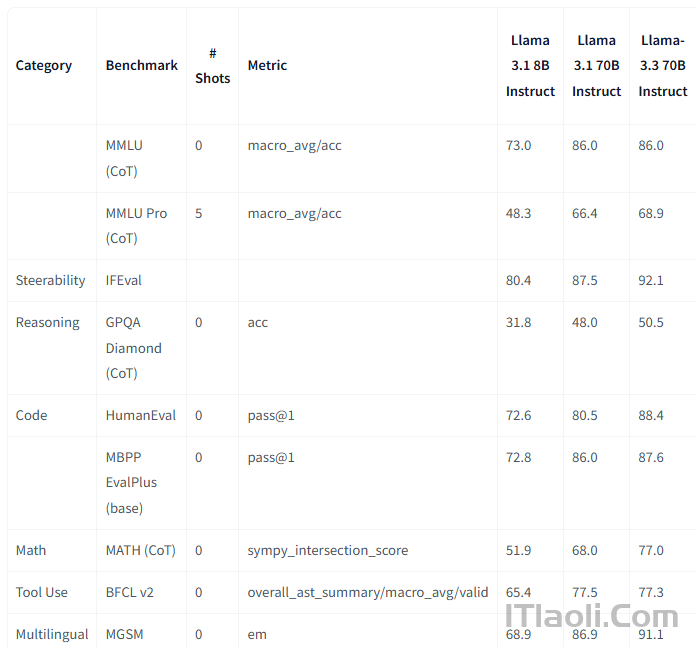Meta has released Llama 3.3, a multilingual large language model aimed at supporting a range of AI applications in research and industry. Featuring a 128k-token context window and architectural improvements for efficiency, the model demonstrates strong performance in benchmarks for reasoning, coding, and multilingual tasks. It is available under a community license on Hugging Face.
Llama 3.3 improves on previous versions with a longer context window of up to 128k tokens and an optimized transformer architecture using Grouped-Query Attention (GQA) for better scalability and efficiency. It is fine-tuned with a combination of supervised learning and reinforcement learning from human feedback, ensuring strong performance across various tasks while maintaining helpfulness and safety.
The model demonstrates strong performance in key benchmarks. The 70-billion-parameter model outperforms open-source and proprietary alternatives in multilingual dialogue, reasoning, coding, and safety evaluations:
- Reasoning and Knowledge: Llama 3.3 achieves 50.5% accuracy on the challenging GPQA reasoning benchmark, improving on its predecessor.
- Code Generation: The model achieves an 88.4% pass@1 on the HumanEval coding benchmark, setting a high standard for AI-assisted programming.
- Multilingual Proficiency: On MGSM, a multilingual reasoning benchmark, Llama 3.3 records a 91.1% Exact Match (EM) score.
The model’s multilingual fluency and text-generation capabilities make it suitable for building AI assistants, developing software, and generating content. Its support for tool integration allows it to work with third-party applications for tasks like data retrieval, computation, and synthetic data generation.
Meta also prioritized safety in the model’s development. Llama 3.3 incorporates robust refusal strategies for potentially harmful prompts and maintains a balanced tone in responses. Developers are encouraged to deploy it within AI systems that include safeguards like Meta’s Prompt Guard and Code Shield for enhanced security.
The release has sparked insightful discussions in the community about its real-world potential. Mihail Shahov, a CEO at Bulcode, highlighted the growing role of compact models like Llama 3.3 in enterprise applications:
Smaller models like Llama 3.3 are certainly gaining traction in enterprise-level applications, particularly for tasks that demand efficiency, cost-effectiveness, and rapid deployment. Their adaptability makes them perfect for use cases such as customer service, personalization, and lightweight analytics—scenarios where speed and affordability often outweigh the need for extreme depth.
In the long term, I imagine a hybrid approach becoming the norm: compact models handling the majority of everyday workloads, while larger models are reserved for niche, high-complexity challenges. Ultimately, it’s about aligning the tool to the task—compact models for scalability and accessibility, mega-models for groundbreaking innovation.
Similarly, Revathipathi Namballa, a CEO at CloudAngles, shared their organization’s plans to adopt Llama 3.3:
This is great news. At CloudAngles, we’ve successfully integrated our mlangles AI platform with Llama 3.2. With the release of version 3.3, we are fully prepared to deploy this upgrade to benefit our customers.
A big thank you to the entire Meta team for their exceptional efforts in pushing the boundaries of AI innovation and making these advancements accessible so that we can explore new possibilities.
The model is accessible under the Llama 3.3 Community License, with checkpoints hosted on Hugging Face. Developers can run the model using popular frameworks like Transformers and leverage quantized versions for reduced hardware demands. Meta invites feedback from the community to refine future iterations and advance AI safety standards.
More details can be found in the Llama 3.3 repository.


